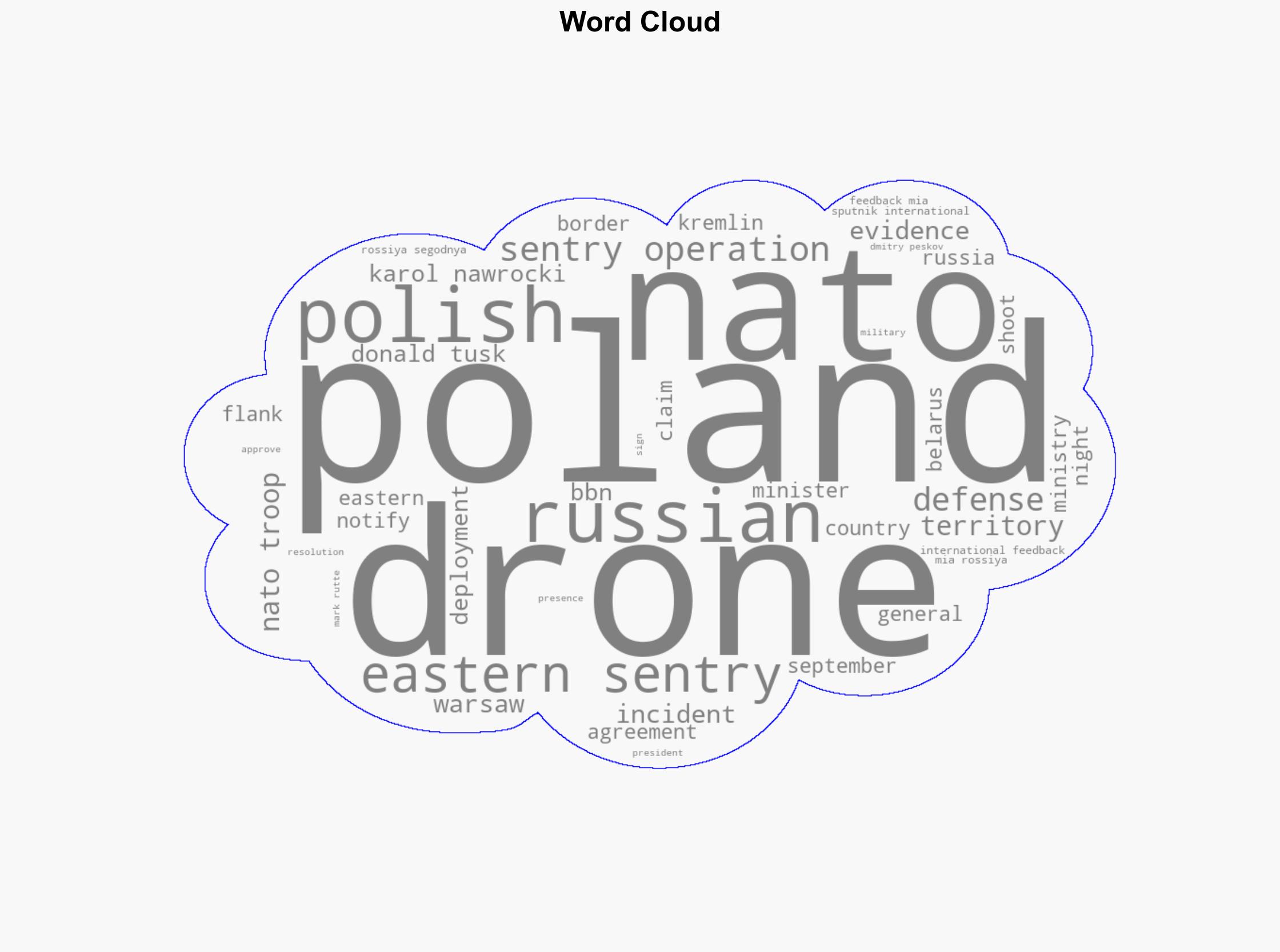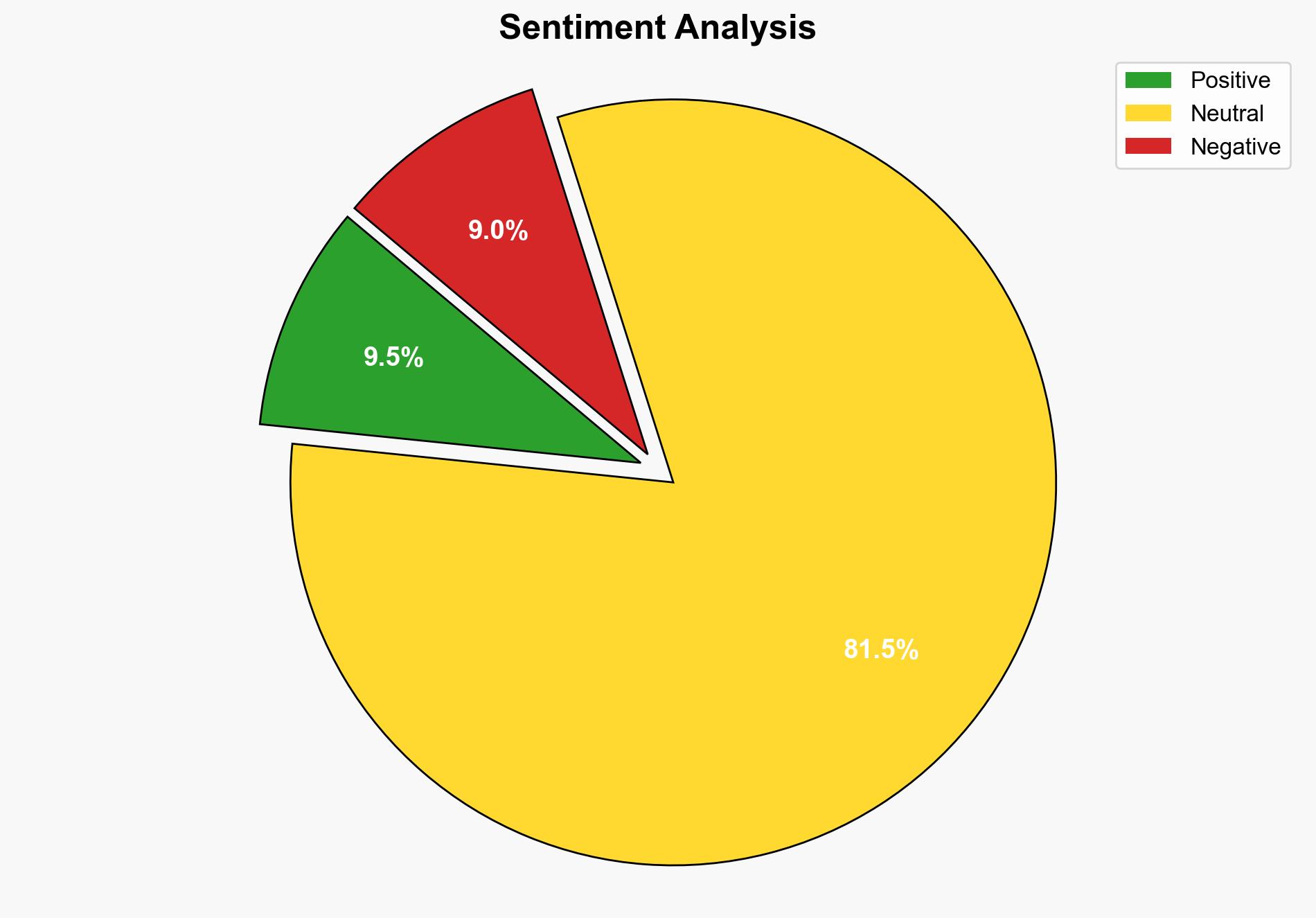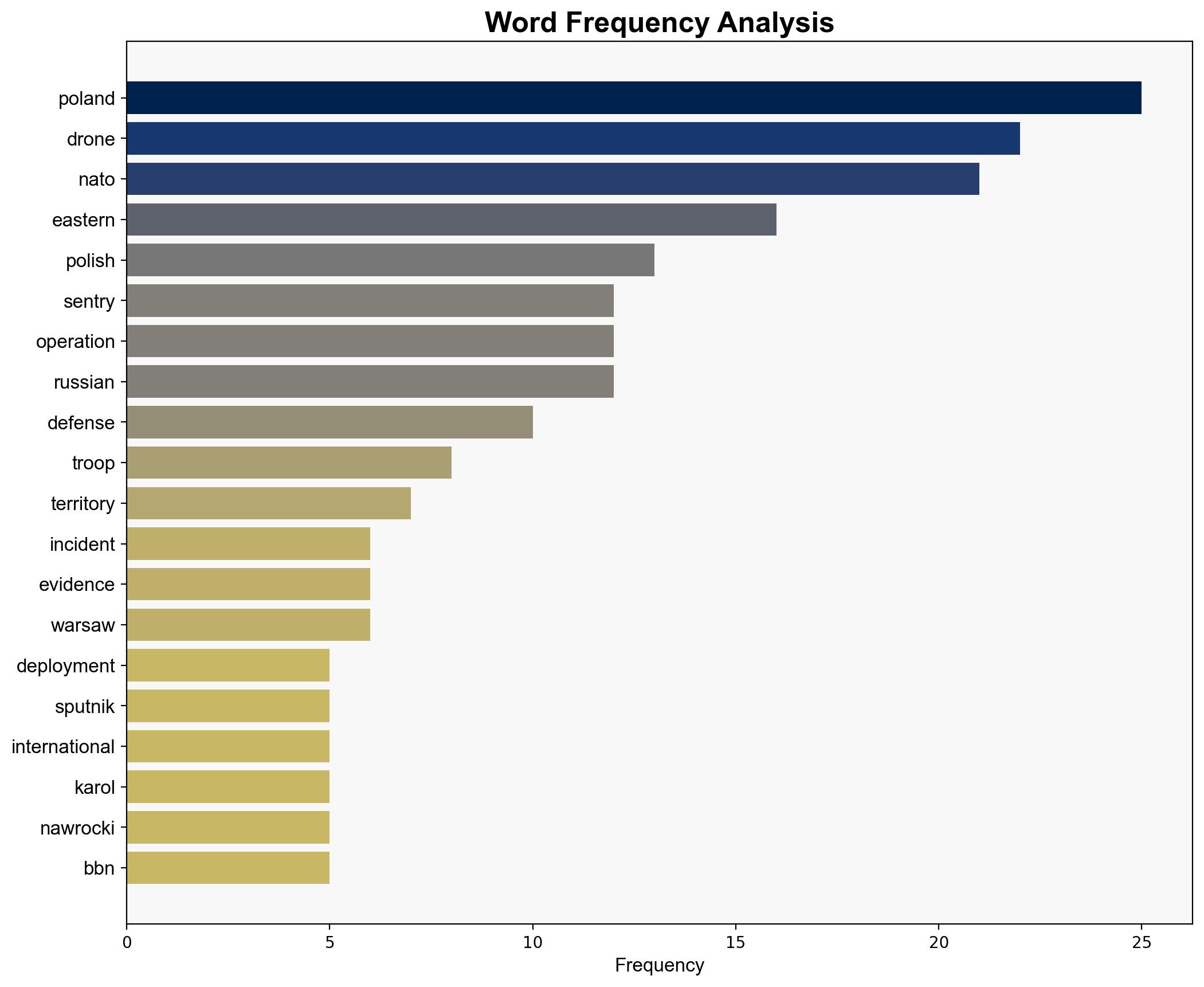Poland Approves NATO Troop Deployment Under Eastern Sentry Operation – Sputnikglobe.com
Published on: 2025-09-15
Intelligence Report: Poland Approves NATO Troop Deployment Under Eastern Sentry Operation – Sputnikglobe.com
1. BLUF (Bottom Line Up Front)
Poland’s approval of NATO troop deployment under the Eastern Sentry Operation is a strategic move to bolster defense on the eastern flank amidst rising tensions with Russia. The most supported hypothesis suggests this deployment is primarily defensive, responding to recent drone incidents and perceived threats from Russia. Confidence level: Moderate. Recommended action: Enhance intelligence-sharing mechanisms within NATO to monitor and address potential escalations.
2. Competing Hypotheses
1. **Defensive Posture Hypothesis**: Poland’s approval of NATO troop deployment is a precautionary measure aimed at strengthening its defense capabilities in response to recent drone incidents and perceived threats from Russia. This hypothesis is supported by the timing of the deployment following the drone incident and statements from Polish officials.
2. **Provocative Maneuver Hypothesis**: The deployment is intended to provoke or pressure Russia, potentially escalating tensions in the region. This view is supported by the involvement of high-level officials and the strategic timing amidst accusations against Russia.
Using ACH 2.0, the Defensive Posture Hypothesis is better supported due to the alignment of Poland’s actions with defensive strategies and historical patterns of seeking NATO support in response to security threats.
3. Key Assumptions and Red Flags
– **Assumptions**: The Defensive Posture Hypothesis assumes that Poland’s actions are purely defensive and not influenced by external pressures to escalate tensions. The Provocative Maneuver Hypothesis assumes that Poland and NATO are willing to risk escalation for strategic gains.
– **Red Flags**: Lack of concrete evidence linking the drone incident directly to Russia raises questions about the narrative’s validity. The classification of details by the Polish National Security Bureau suggests potential information gaps or strategic withholding.
4. Implications and Strategic Risks
The deployment could lead to increased military presence and activity in the region, heightening the risk of miscalculations or accidental engagements. Economically, prolonged tensions could impact regional trade and investment. Geopolitically, this move may strain EU-Russia relations further and impact NATO’s cohesion if member states disagree on the approach.
5. Recommendations and Outlook
- Enhance NATO’s intelligence-sharing capabilities to provide real-time updates and assessments of regional threats.
- Engage in diplomatic dialogues with Russia to de-escalate tensions and clarify intentions behind military deployments.
- Scenario Projections:
- Best Case: Successful de-escalation through diplomatic channels, leading to reduced military presence.
- Worst Case: Escalation into direct military confrontation, impacting regional stability.
- Most Likely: Continued military posturing without direct conflict, maintaining high tension levels.
6. Key Individuals and Entities
– Karol Nawrocki
– Mark Rutte
– Donald Tusk
– Dmitry Peskov
– Andrey Ordash
– Pavel Muraveiko
7. Thematic Tags
national security threats, cybersecurity, counter-terrorism, regional focus




